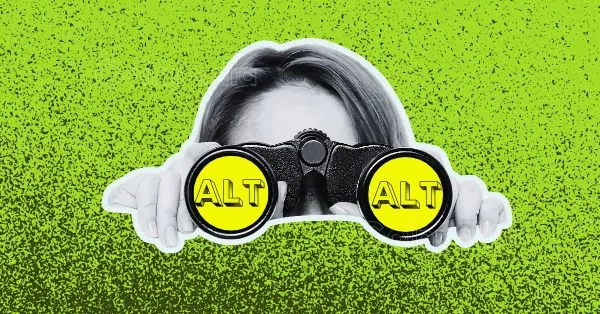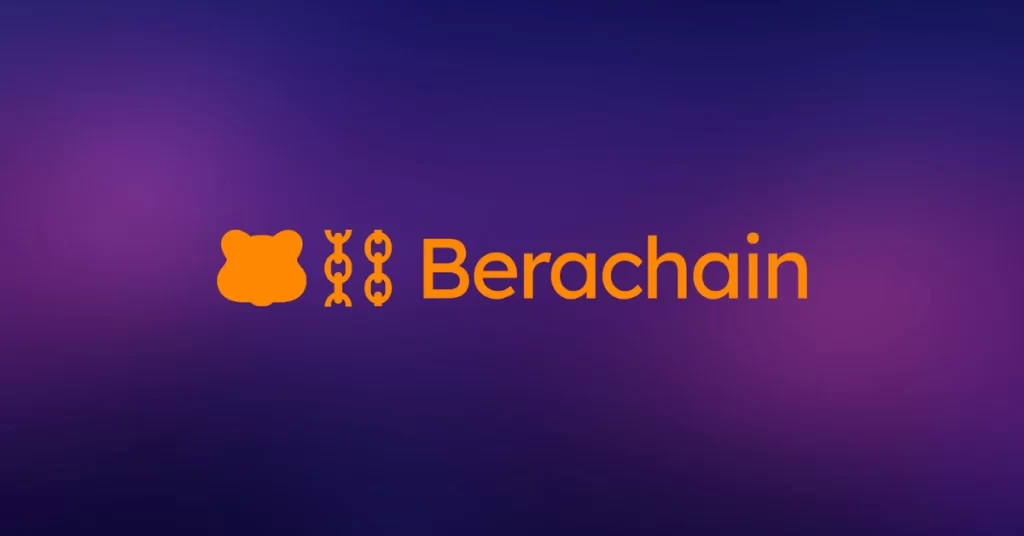
The post Mastering Crypto Chart Patterns: Your Guide to Predicting Market Trends appeared first on Coinpedia Fintech News
Trading patterns is a topic that every trader should explore whatever is the market he or she focuses on. Have you ever wondered how crypto analysts make crypto predictions accurately? What enables them to do the market trend analysis is their skill and knowledge to understand and interpret crypto chart patterns.
1. Crypto Chart Patterns: What You Need to Know
Imagine being able to spot patterns that reveal whether the price is about to skyrocket or take a nosedive. That’s exactly what crypto chart patterns empower you to do!
They provide a visual representation of market behavior helping you make informed decisions and seize opportunities for profit.
Bullish patterns will send your spirits soaring as they signal an upcoming price surge, encouraging you to join the buying frenzy. On the flip side, bearish patterns will raise your eyebrows, cautioning you of an impending price drop and prompting you to take protective measures.
These patterns come in various shapes and sizes, each with its own unique story to tell. From the graceful curves of a ‘cup and handle’ pattern to the formidable triple peaks of a ‘head and shoulders’ pattern, each one holds valuable insights into market dynamics.
1.1 Trading Crypto with Chart Patterns
The first step is to familiarise yourself with the various types of chart patterns.
Precisely, each chart pattern has its own distinct characteristics and implications, offering valuable insights into market trends. By understanding these patterns, you will be equipped to identify potential entry and exit points, helping you make informed decisions.
2. Trending Crypto Chart Patterns: Exploring the Popular Ones
There are numerous chart patterns. Each pattern has its own unique characteristics, functionalities, and advantages. It’s difficult to categorize them.
But, when you examine chart patterns closely, you see three primary types: triangles, rectangles, and poles. Additionally, each main type has various subcategories.
Here we will discuss some of the most relevant chart patterns – the ones which are popular and are unique for their characteristics.
2.1 Mastering Triangle Crypto Chart Patterns
Triangle Crypto Chart Patterns are very popular and widely used. Ascending Triangles, Descending Triangles, Symmetrical Triangle,s and Wedges are the prime ones.
2.1.1. Ascending Triangle
Suppose Bitcoin has been on an upward trend for several months. During this time, its price forms a series of higher highs and higher lows. At a certain price level, there is significant resistance that the crypto attempts to surpass. This resistance acts as a psychological barrier, causing consolidation. Eventually, when the price breaks above the resistance level, it confirms the ascending triangle pattern, suggesting a potential continuation of the bullish trend.
2.1.2. Descending Triangle
Consider Bitcoin experiencing a prolonged downtrend, with the price gradually forming lower highs and lower lows. At a specific price level, a strong support level halts further decline, The price bounces off this support multiple times, creating a descending triangle pattern. This formation suggests that the bearish trend is expected to continue, providing a potential sell signal for traders.
2.1.3. Symmetrical Triangle
Picture Ethereum’s price moving in a sideways manner, with alternating higher lows and lower highs. These price swings create a symmetrical triangle formation, where the upper and lower trendlines converge. As the triangle narrows, it indicates a decreasing range of price volatility. Traders closely monitor this pattern as a breakout in either direction, accompanied by significant volume, could signify a potential trend reversal.
2.1.4. Wedges
Wedges are special triangle patterns that can further be classified into rising wedges and falling wedges. They provide valuable insights into potential price reversals.
2.2. Exploring Rectangle Crypto Chart Patterns
Rectangle Crypto Chart Patterns are unique and have many special features. Bullish Rectangle, Bearish Rectangle, Double Top and Double Bottom are the main patterns that come under this category.
2.2.1. Bullish Rectangle
Picture a cryptocurrency experiencing a downtrend, with the price consolidating within a range bounded by a strong support level and a resistance level. This consolidation forms a Bullish Rectangle pattern, indicating diminishing selling pressure and a potential upward breakout. Traders eagerly await the price to breach the resistance level, providing a confirmation for a buy signal.
2.2.2. Bearish Rectangle
In contrast, suppose the same crypto has been in an uptrend, but the price starts consolidating within a range, bounded by a strong support level and a resistance level. This consolidation creates a Bearish Rectangle pattern, suggesting waning buying momentum and a potential downward breakout. Traders keenly observe the support level, waiting for a confirmation break to initiate a sell signal.
2.2.3. Double Top
Let’s say Bitcoin experiences a significant price surge, reaching a new high and subsequently pulling back. After a brief recovery, the price attempts to surpass the previous high but fails, forming the second peak. This Double Top pattern suggests a bearish reversal, and astute traders may consider it as a sell signal, anticipating a downward price movement.
2.2.4. Double Bottom
In contrast, consider a scenario where Bitcoin’s price declines and reaches a particular level, bounces back up, and then retraces to the same level once again. This forms the Double Bottom pattern, indicating a bullish reversal. Savvy traders may perceive this as a buy signal, expecting an uptrend following a successful break above the upper horizontal line.
2.3. Learning Pole Crypto Chart Patterns
Pole crypto chart patterns are really special for their accuracy. In terms of popularity, some of them are the highly preferred ones. Bullish Flag, Bearish Flag, Bullish Pennant and Bearish Pennant are the popular ones.
2.3.1. Bullish Flag
Let’s imagine a cryptocurrency experiencing a strong price surge, known as the pole, followed by a period of consolidation with a series of lower highs. This consolidation resembles a flag, hence the name ‘Bullish Flag’. Traders recognise this pattern as a potential buying opportunity, expecting the price to break out above the consolidation phase and continue the upward trend.
2.3.2. Bearish Flag
The Bearish Flag is the mirror image of the Bullish Flag.
Suppose the same crypto encounters a significant downward price movement, forming the pole, followed by a consolidation phase characterised by higher highs. This consideration resembles a flag but in a bearish context. Traders interpret this pattern as a sell signal, anticipating a downward breakout from the consolidation phase, leading to a continuation of the bearish trend.
2.3.3. Bullish Pennant
A Bullish Pennant is a pattern similar to a Bullish Flag but with a triangular consolidation structure.
Imagine a cryptocurrency experiencing a rapid upward price movement, forming the pole, followed by a consolidation period where the price forms a triangular pattern with higher lows and lower highs. Traders interpret this pattern as a bullish sign, anticipating the price to break out of the consolidation phase and continue its upward trajectory.
2.3.4. Bearish Pennant
The Bearish Pennant is the inverse of the Bullish Pennant.
Let’s assume the same cryptocurrency encounters a steep price decline, forming the pole, followed by a consolidation phase where the price gradually decreases. This consolidation phase resembles a pennant but in a bearish context. Traders intercept this pattern as a sell signal, expecting a downward breakout from the consolidation phase, indicating a continuation of the bearish trend.
2.4. Other Trending Chart Trading Patterns
There are some unique patterns that don’t fit inside any of the general types. The prominent among them are Head and Shoulders Pattern, Inverted Head and Shoulders Pattern, and Cup and Handle Pattern.
2.4.1. Head and Shoulders Crypto Chart Patterns
Imagine you are analysing the price chart of a cryptocurrency. You notice a peak (the head) followed by two smaller peaks on either side (the shoulders). This pattern suggests a potential trend reversal. If the head and shoulders pattern forms after an uptrend, it indicates a bearish reversal. Conversely, if it forms after a downtrend, it signals a bullish reversal.
2.4.2. Invested Head and Shoulders
Let’s flip things around and explore the inverted head and shoulders pattern!
Suppose you are analysing a cryptocurrency’s price chart and notice a trough (the head) followed by two smaller troughs (the shoulders) on either side. This pattern suggests a potential trend reversal. If the inverted head and shoulders pattern forms after a downtrend, it indicates a bullish reversal.
2.4.3. Cup and Handle
Imagine you’re analysing the price chart of a cryptocurrency, and you observe a rounded bottom formation, resembling a cup. Following the cup formation, there’s a small downward movement called the handle. This pattern typically indicates a bullish reversal. Traders often look for a breakout above the handle’s resistance level as a conformation of the pattern, signalling a potential upward trend.
2.5. Special Chart Patterns to Detect Market Manipulation
In certain circumstances, we cannot blindly rely on popular chart patterns, as the crypto market is highly susceptible to manipulation.
There are charts that are exclusively designed to detect market manipulation.
2.5.1. The Bart Simpson Pattern
Suppose you’re analyzing the Bitcoin chart on a smaller timeframe, and you notice something peculiar. You observe sudden movements, a bump in one direction, followed by consolidation, and then another abrupt bump in the opposite direction, returning close to the base price. This intriguing phenomenon has earned the name ‘Bart Simpson’ pattern, owing to its resemblance to the head shape of the iconic Simpsons character.
This pattern often emerges during volatile trading periods. The motive behind these sudden pumps and dumps is likely the liquidation of crypto margin traders, both short and long, through market manipulation.
3. Success Rate of Crypto Chart Patterns
One of the factors that determine how much importance you should give to the interpretation derived from a specific chart pattern is the success rate. Well, what is it?
The success rate of crypto chart patterns relies on a combination of factors, including the trader’s skill, market conditions, and supporting indicators.
Precisely, by continuously honing their chart pattern analysis skills, staying updated on market dynamics, and leveraging complementary indicators, traders can enhance their accuracy in interpreting and capitalizing on chart patterns.
Endnote
In the ever-evolving landscape of cryptocurrency trading, chart patterns serve as invaluable tools, guiding us through the complexities of the market. By understanding and recognizing these patterns, we unlock a wealth of insights that can fuel our trading strategies. So, as you embark on your trading journey, remember to harness the power of chart patterns, for they hold the key to unlocking new opportunities and navigating the thrilling world of cryptocurrencies.
FAQ
Crypto chart patterns are visual representations of price movements in cryptocurrency charts that help identify potential trends and market behavior.
Common crypto chart patterns include bullish flags, bearish flags, bullish pennants, bearish pennants, head and shoulders, and cup and handle patterns.
Yes, there are unique chart patterns in the crypto world, such as the “Bart Simpson” pattern, characterized by sudden price movements resembling the iconic head shape of the character.
The Wyckoff pattern, developed by Richard D Wyckoff, focuses on understanding price movements driven by institutional investors and market manipulation, and trading opportunities.
By familiarising yourself with different chart patterns, you can identify potential entry and exit points, set price targets, and better time your trades based on the patterns’ predicted outcomes.
Chart patterns occur regularly in cryptocurrency markets due to the dynamic nature of price movements. By staying vigilant and conducting regular analysis, traders can spot patterns as they emerge.

 2 months ago
28
2 months ago
28









 English (US) ·
English (US) ·